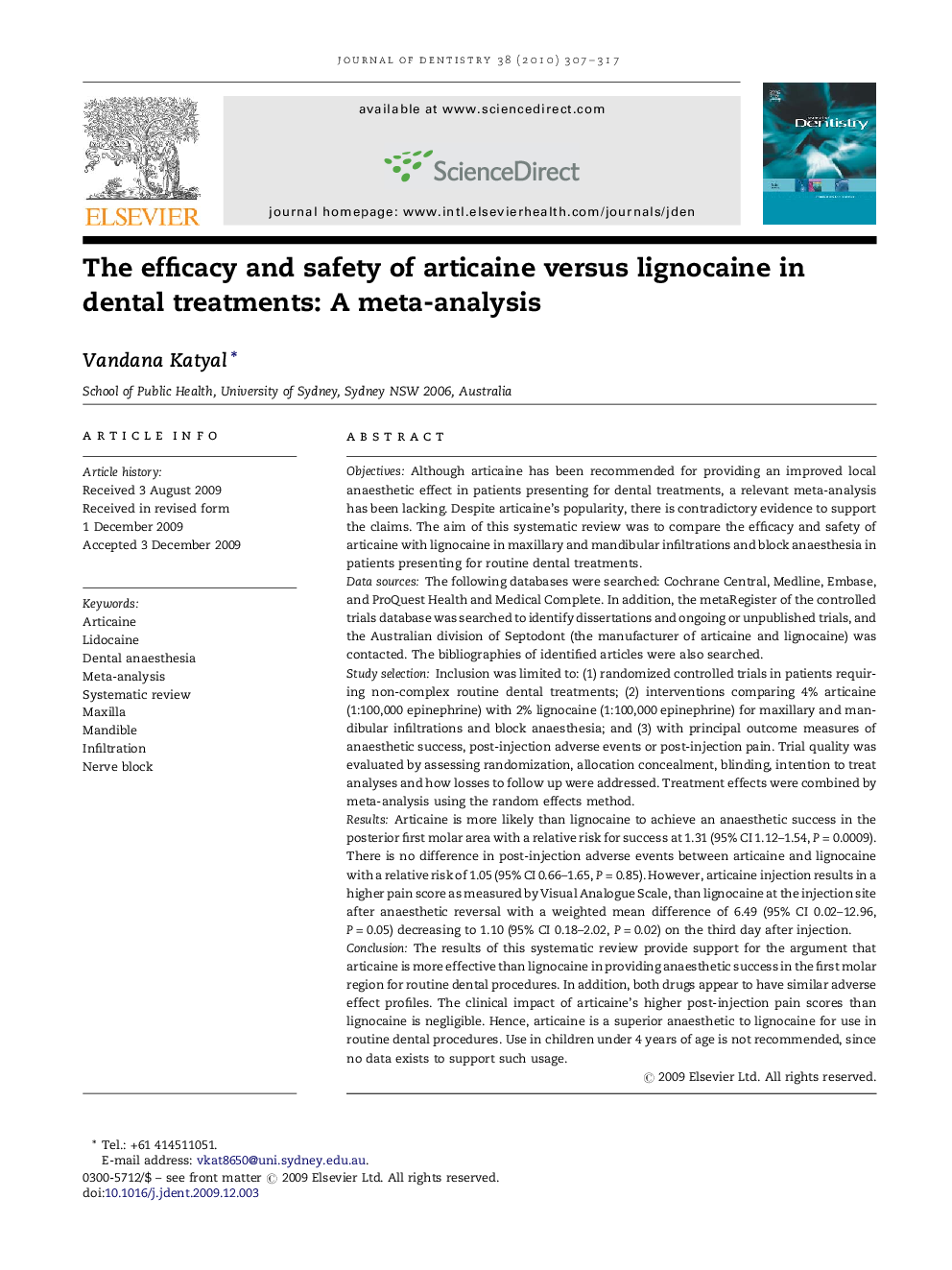| Article ID | Journal | Published Year | Pages | File Type |
|---|---|---|---|---|
| 3146117 | Journal of Dentistry | 2010 | 11 Pages |
ObjectivesAlthough articaine has been recommended for providing an improved local anaesthetic effect in patients presenting for dental treatments, a relevant meta-analysis has been lacking. Despite articaine's popularity, there is contradictory evidence to support the claims. The aim of this systematic review was to compare the efficacy and safety of articaine with lignocaine in maxillary and mandibular infiltrations and block anaesthesia in patients presenting for routine dental treatments.Data sourcesThe following databases were searched: Cochrane Central, Medline, Embase, and ProQuest Health and Medical Complete. In addition, the metaRegister of the controlled trials database was searched to identify dissertations and ongoing or unpublished trials, and the Australian division of Septodont (the manufacturer of articaine and lignocaine) was contacted. The bibliographies of identified articles were also searched.Study selectionInclusion was limited to: (1) randomized controlled trials in patients requiring non-complex routine dental treatments; (2) interventions comparing 4% articaine (1:100,000 epinephrine) with 2% lignocaine (1:100,000 epinephrine) for maxillary and mandibular infiltrations and block anaesthesia; and (3) with principal outcome measures of anaesthetic success, post-injection adverse events or post-injection pain. Trial quality was evaluated by assessing randomization, allocation concealment, blinding, intention to treat analyses and how losses to follow up were addressed. Treatment effects were combined by meta-analysis using the random effects method.ResultsArticaine is more likely than lignocaine to achieve an anaesthetic success in the posterior first molar area with a relative risk for success at 1.31 (95% CI 1.12–1.54, P = 0.0009). There is no difference in post-injection adverse events between articaine and lignocaine with a relative risk of 1.05 (95% CI 0.66–1.65, P = 0.85). However, articaine injection results in a higher pain score as measured by Visual Analogue Scale, than lignocaine at the injection site after anaesthetic reversal with a weighted mean difference of 6.49 (95% CI 0.02–12.96, P = 0.05) decreasing to 1.10 (95% CI 0.18–2.02, P = 0.02) on the third day after injection.ConclusionThe results of this systematic review provide support for the argument that articaine is more effective than lignocaine in providing anaesthetic success in the first molar region for routine dental procedures. In addition, both drugs appear to have similar adverse effect profiles. The clinical impact of articaine's higher post-injection pain scores than lignocaine is negligible. Hence, articaine is a superior anaesthetic to lignocaine for use in routine dental procedures. Use in children under 4 years of age is not recommended, since no data exists to support such usage.
